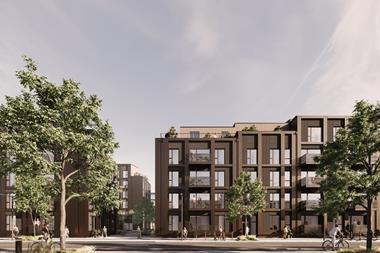US - The residential real estate market in the United States looks set to continue falling in 2009 after house price declines reached record lows at the end of 2008, according to Standard & Poor's Case-Shiller Home Prices Indices.
THE S&P/Case-Shiller US National Home Price Index recorded an 18.2% decline in the fourth quarter of 2008 compared to the same time last year - the largest in the index's 21-year history.
Annual declines for the 10-City ad 20-City Composites also reached record lows of 19.2% and 18.5% respectively.
David Blitzer, chairman of the index committee at Standard and Poor's, said: "There are very few, if any, pockets of turnaround that one can see in the data. Most of the nation appears to remain on a downward path, with all of the 20 metro areas reporting annual declines, and eight of those MSAs (Metropolitan Statistical Areas) now have negative rates exceeding 20%."
Of the 20 metropolitan areas covered, 13 have been reporting consecutive record declines since December 2007 and by December 2008, average house prices across the US were down 28% from the peak in the second quarter of 2006, to hold values close to those seen in 2003.
Analysts participating in an S&P teleconference did not want to speculate when the market might bottom out as Karl Case, professor of economics at Wellesley College, insisted house prices were "not conditioned on specific fundamentals" but by factors like location, income and construction costs.
Boston, Denver, Los Angeles, San Diego and Washington DC showed slight improvements in year-over-year returns and lower rates of decline than last month's values.
According to Case, this could be down to the relative strength of the economy and abundant population.
Detroit showed marginal improvement in monthly returns but delivered poorer annual rates. Las Vegas, Minneapolis and Phoenix, however, all reported monthly declines of over 4.5%.
The Sunbelt cities were the worst performing in terms of year-over-year declines, reporting negative returns of over 20%. Phoenix was down 34%, Las Vegas 33% and San Francisco 31.2%.
Of the 20 metro areas, 18 are in double digit declines from their peaks with half of MSA's showing declines in excess of 20% and Las Vegas, Miami, Phoenix and San Francisco in excess of 40%.
Going forward, S&P predicted markets which reached the highest prices during the boom years, such as Washington, will decline the most while prices in some areas like Miami, however, are still 165% higher now than 2000 levels.
Blitzer suggested one of the main issues in the US real estate industry is the high level of foreclosures. If the government goes ahead changing the bankruptcy code it may help reduce the levels of foreclosures but Blitzer warned "the very short-term affect is likely to be very small".
Standard & Poor's produces credit ratings, indices, investment research and data. The S&P/Case-Shiller Home Price Indices track the prices of atypical single-family homes located in each metropolitan area in the US.
If you have any comments you would like to add to this or any other story, contact Poppy Sketchley on + 44 (0)20 7261 4629 or email poppy.sketchley@ipe.com












